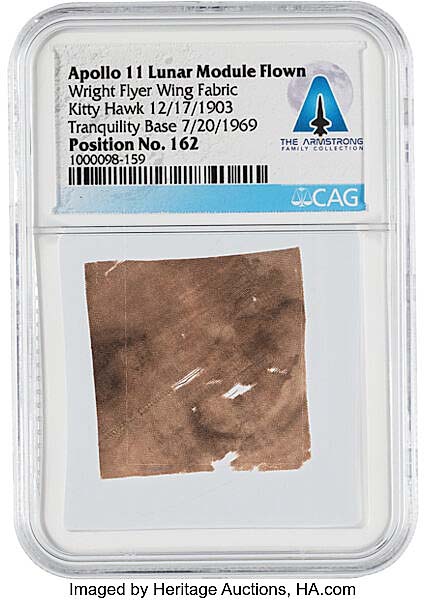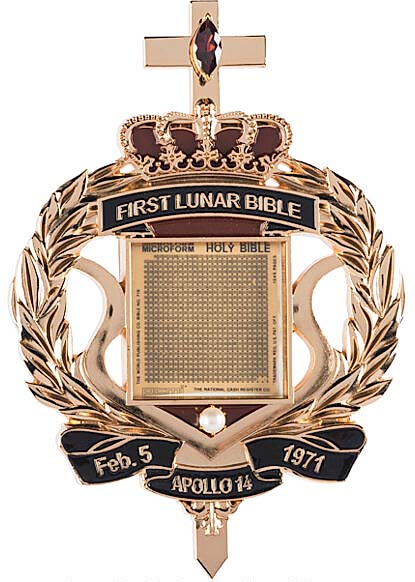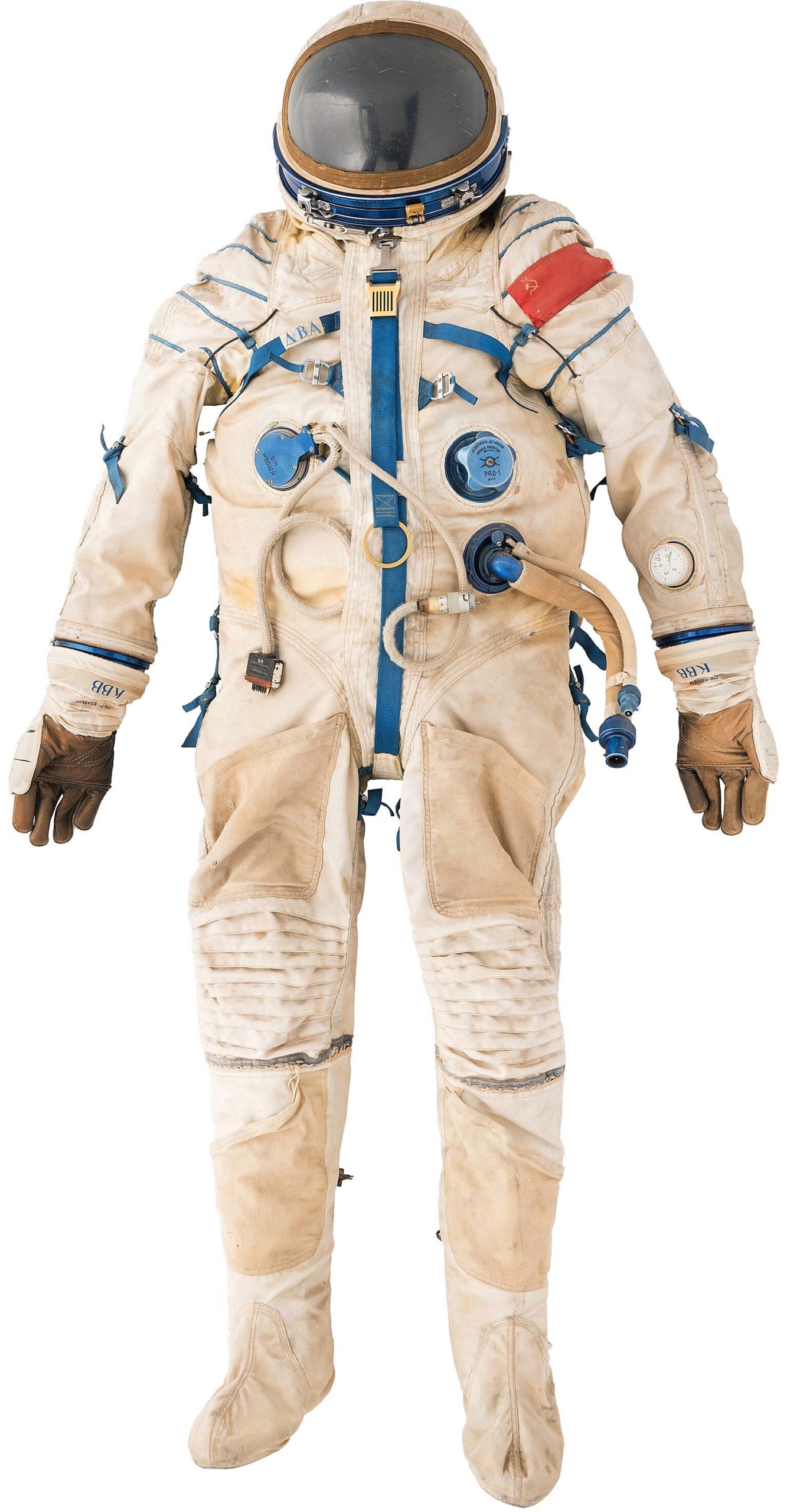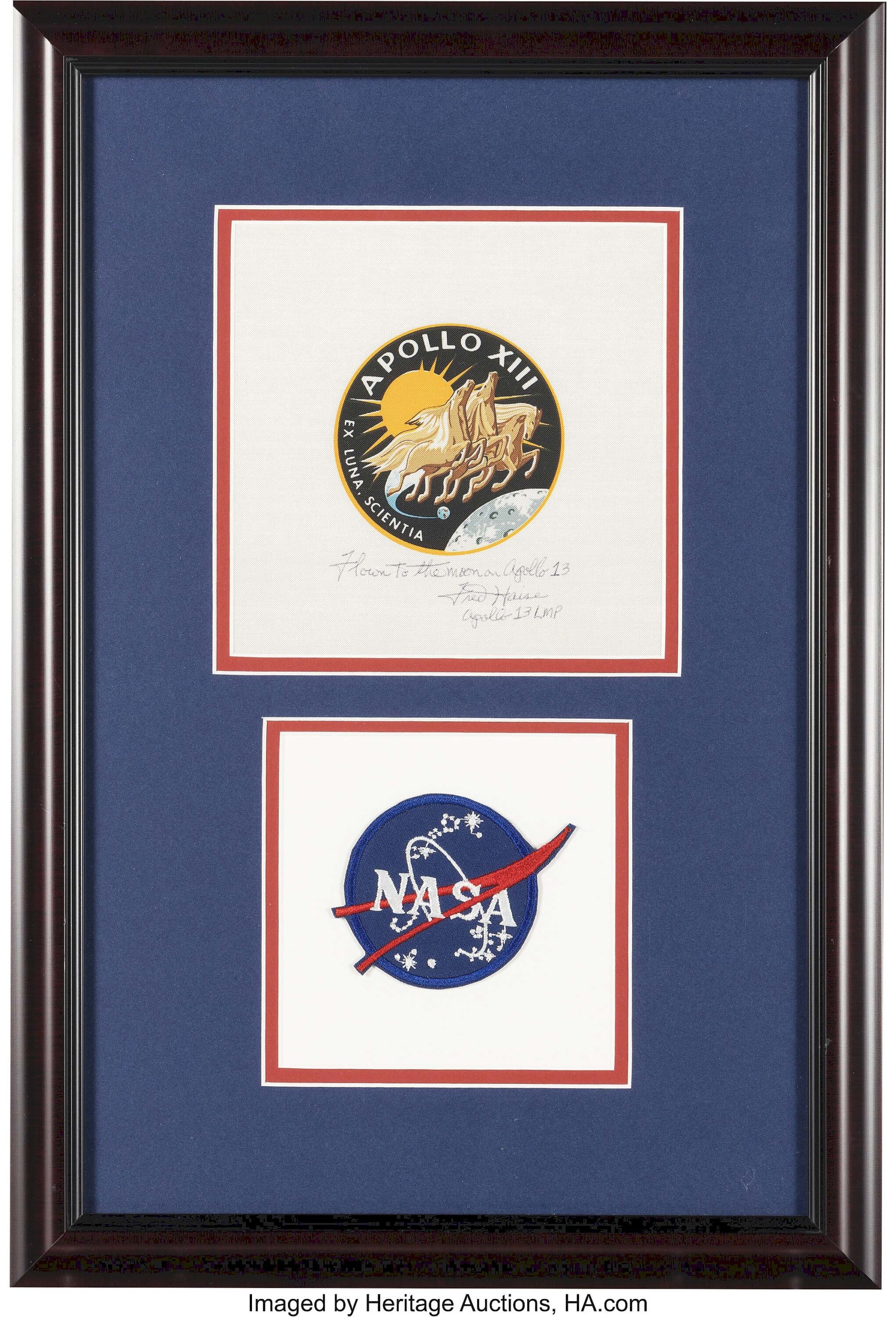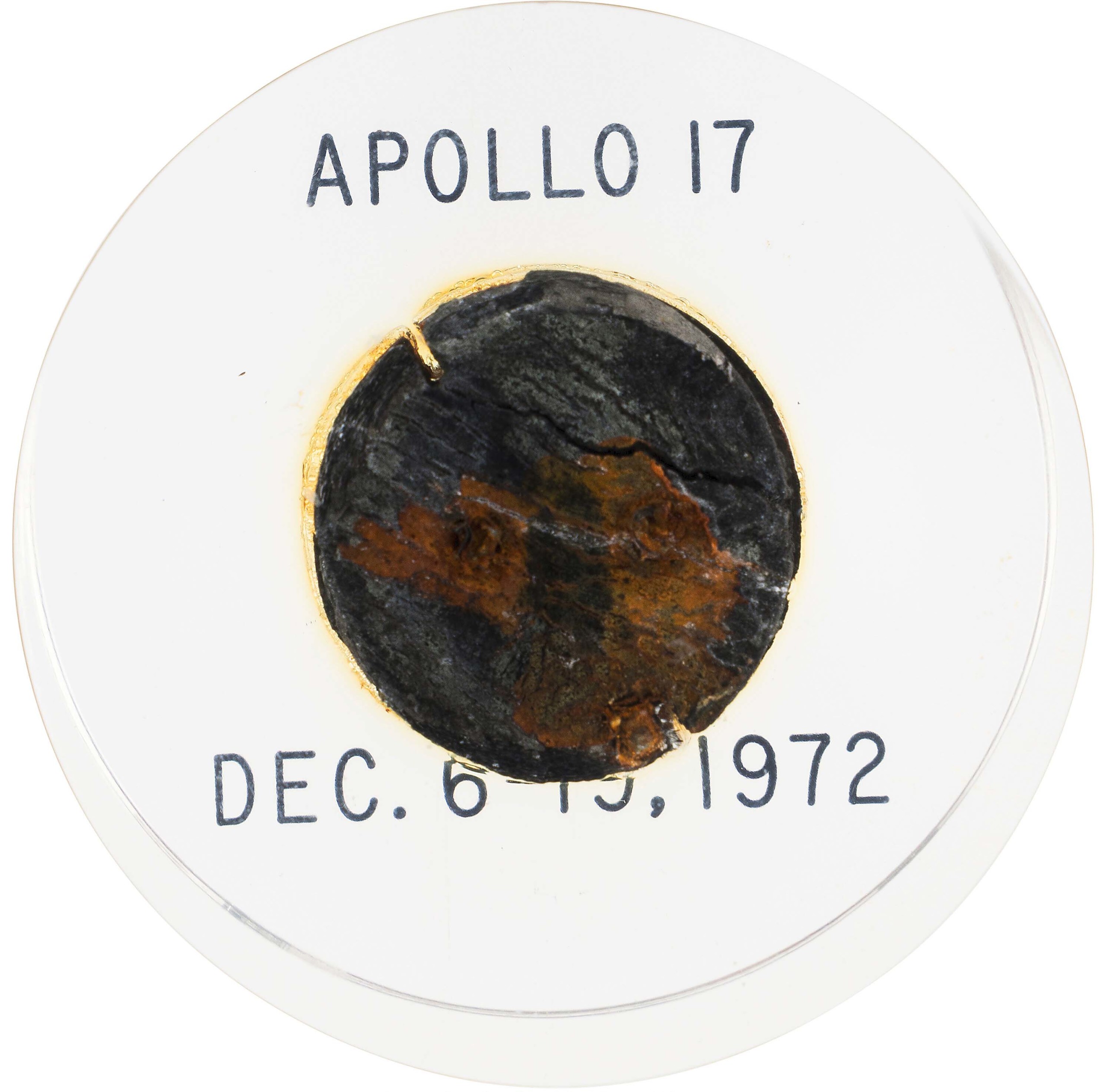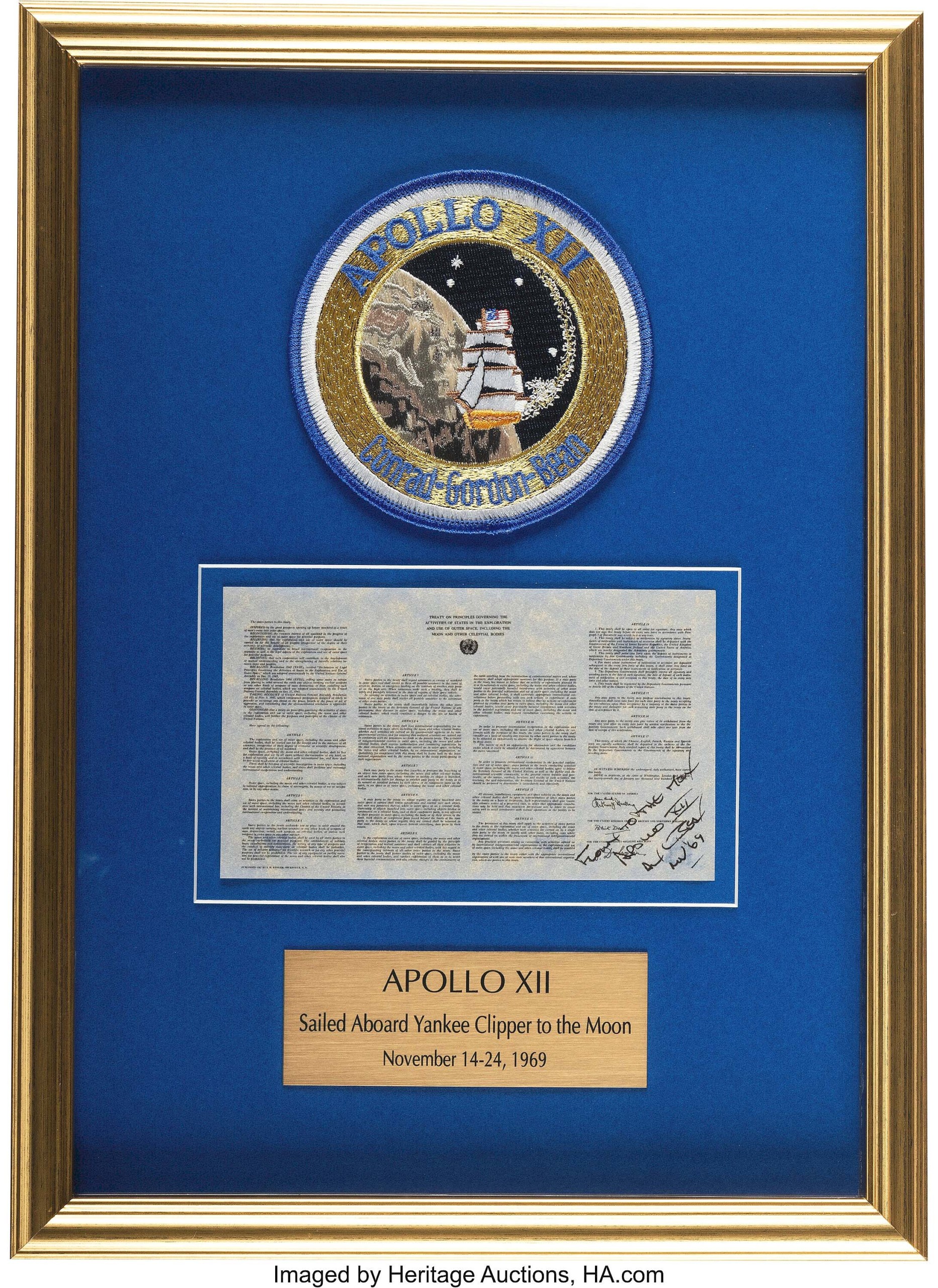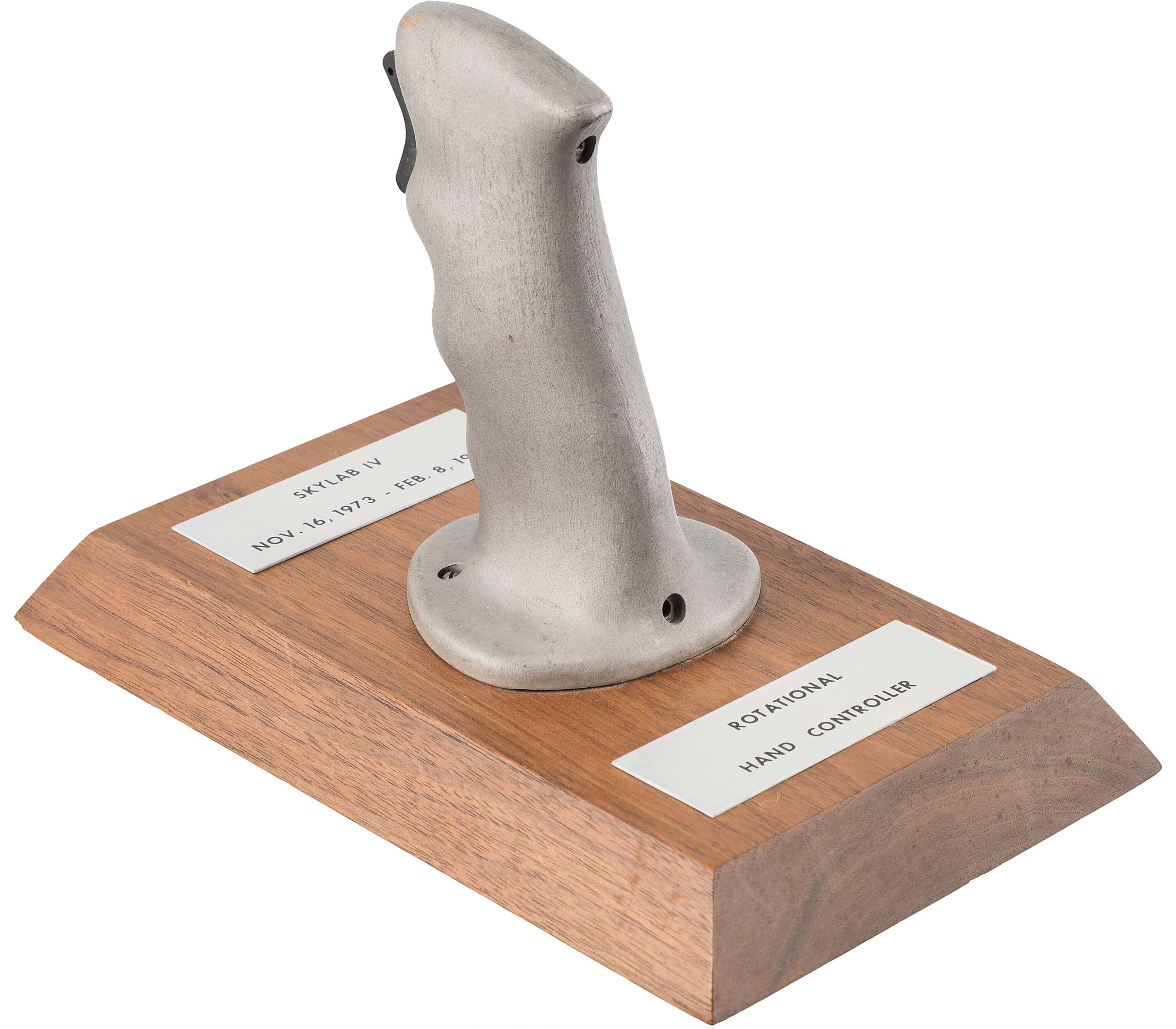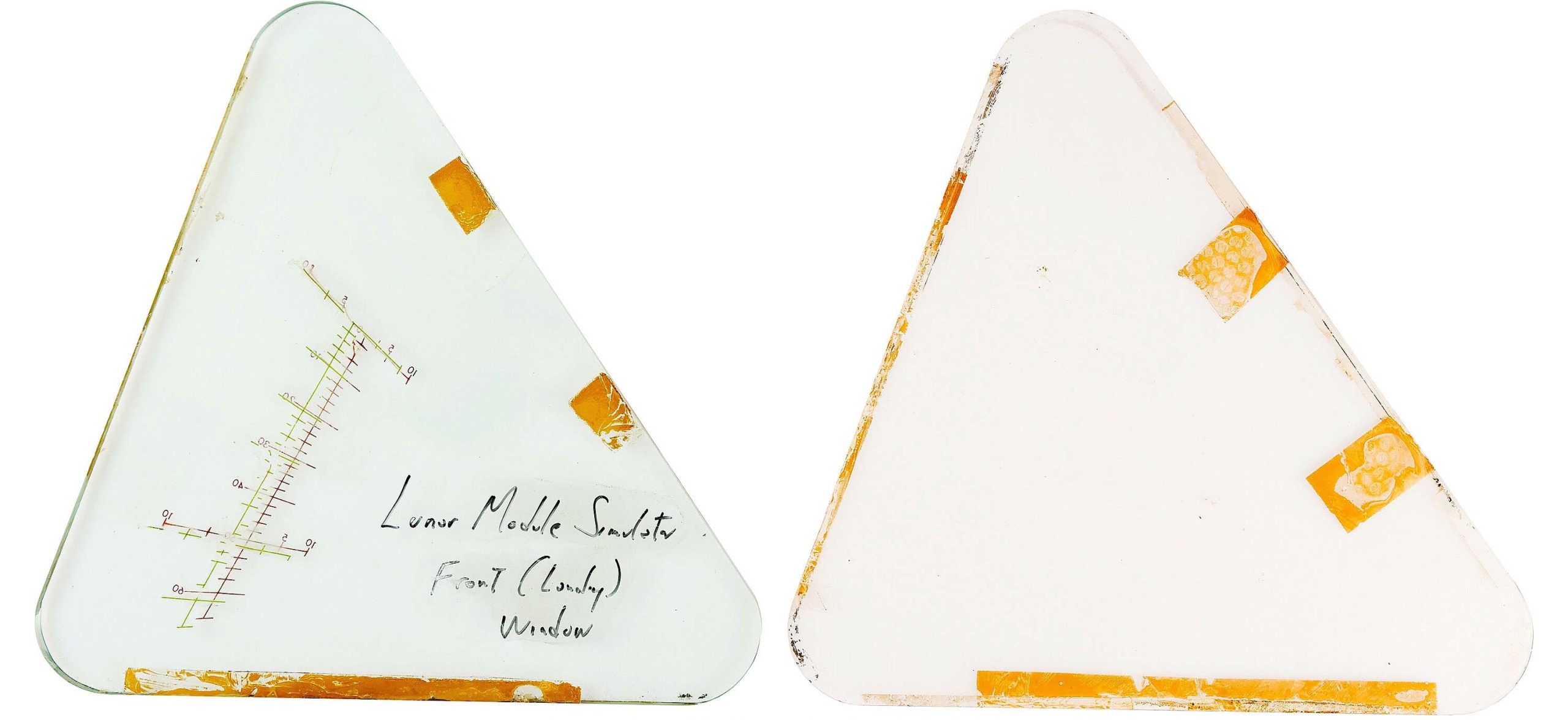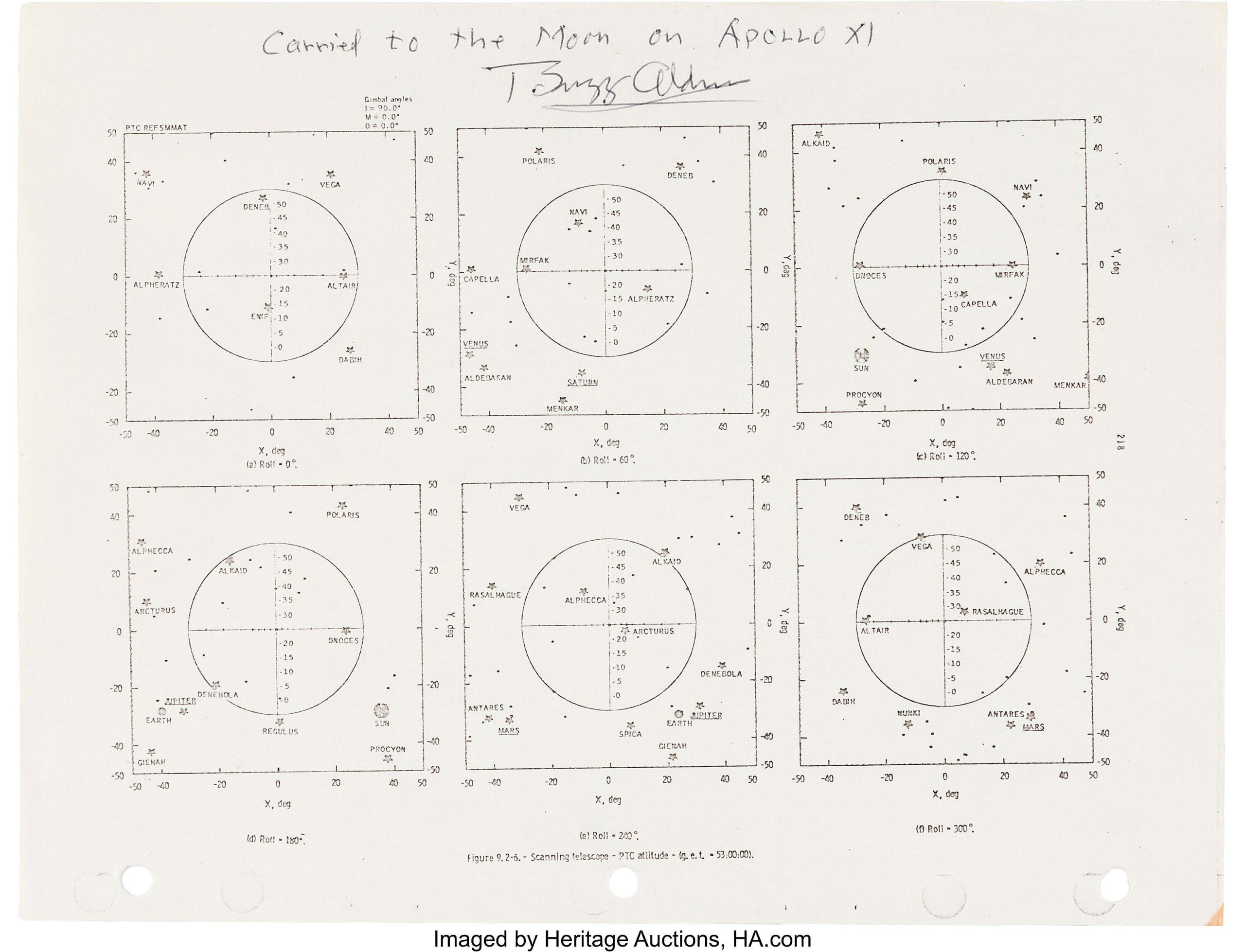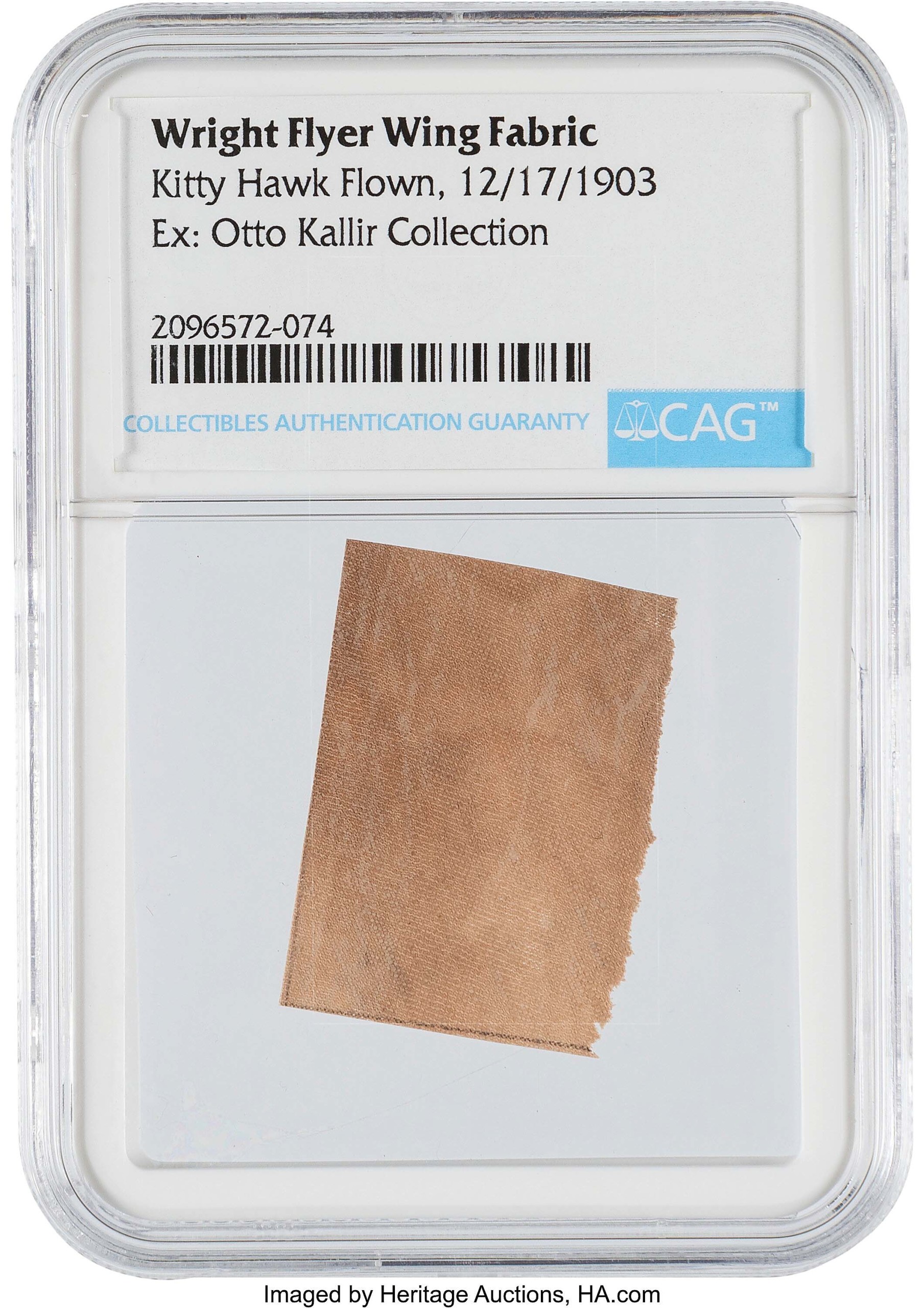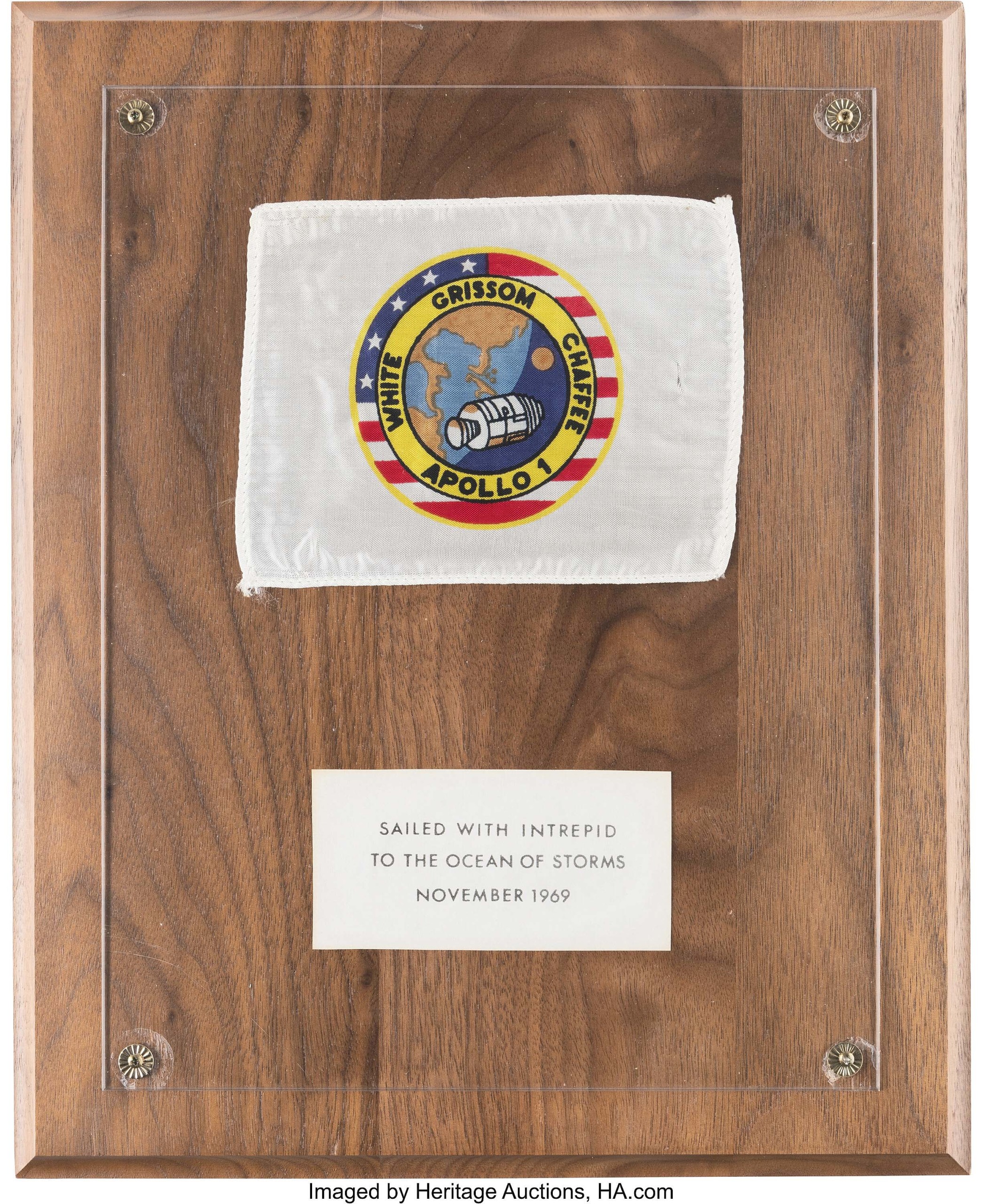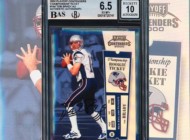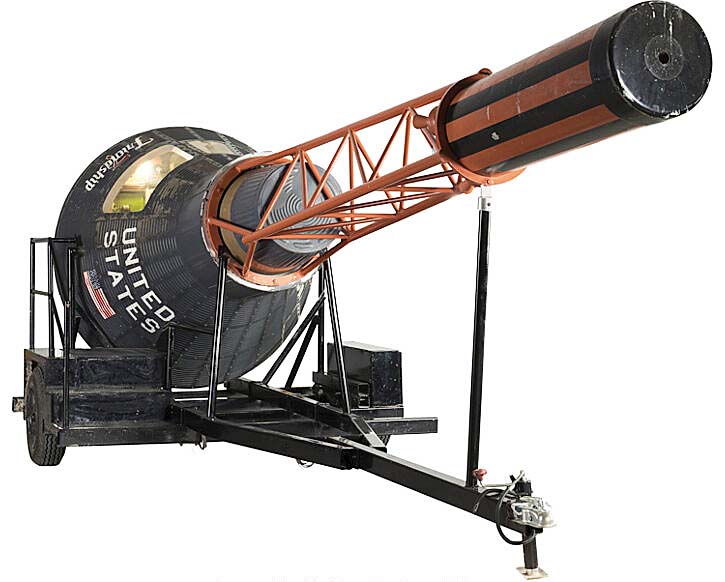
Earning the top spot at $106,250 was the full-scale Friendship 7 Mercury Spacecraft Exhibition Model.
Review By Caitlyn “Cat” Snell; Catalog Photos Courtesy Heritage Auctions
DALLAS — Heritage Auctions’ December 14-15 Space Exploration Auction featured more than 1,000 lots, including many iconic pieces of history with a multitude of flown objects from impressive estates. From the first powered flight at Kitty Hawk to the last crewed mission to the moon with Apollo 17, these offerings represented some of the most pivotal moments of flight history and brought in $1,376,392 at press time. With 8,474 bidders and 98 percent of lots sold, the space memorabilia market continues to hold strong interest, especially in rare or unique items.
Highlighting the sale was a full-scale exhibition model of the Friendship 7 Mercury spacecraft. Brad Palmer, director of space exploration at Heritage, described in a press release that this offering was “a once-in-a-lifetime opportunity to own an unbelievably important artifact.” Manufactured by McDonnell Aircraft Corporation, the craft held John Glenn as he became the first American to orbit the earth which represented the United States’ entrance into the Space Race. This full-scale model was also manufactured by McDonnell and spans an impressive 23 feet in length and 6 feet in diameter. A life-sized mannequin in a Mercury spacesuit was donated with the model to the Boy Scouts of America in 1966 and was offered with the lot alongside the body of the craft as well as its escape tower. It is the only known model of its kind and claimed $106,250 at auction.
Mercury 7 and the Space Race were repeated themes in the auction as another Mercury 7 artifact as well as a Soviet space suit from later in the era crossed the podium. A circa 1960-64, Mercury spacecraft clock manufactured by McDonnell was featured. Used for training purposes, this lot was identical to those that flew except for a few wires. Ultimately going for $21,250, this offering shows that rare Project Mercury equipment is still very much in demand.
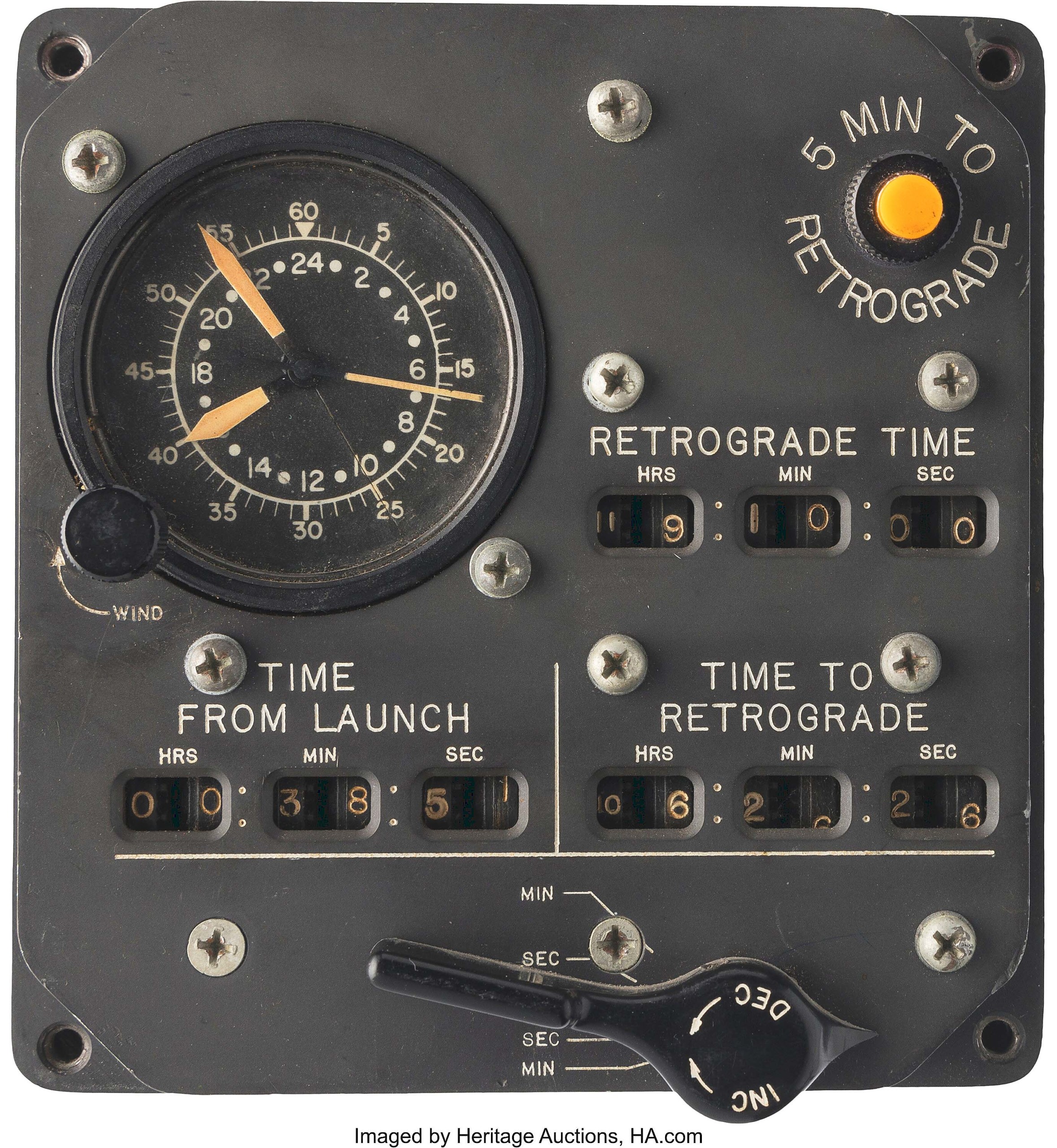
This Mercury 7 clock was manufactured by McDonnell Aircraft Corporation and is one of only four built; it brought $21,250.
Another unique item was the Soviet Sokol K pressurized spacesuit, which was the highest-selling international space program lot at $20,000. This full “rescue” spacesuit, manufactured by NPP Zvezda, was issued to cosmonaut Vladimir Dzanibekov, with the exception of the gloves which are marked for Vladimir Kovalyonok, one of Dzanibekov’s crewmates on Salyut 6 space station. Though the suit shows use and wear, it is unknown if it was used for flight or training purposes.
The second-highest earning lot was a section of the Wright Flyer’s wing fabric from the first successful powered controlled flight in history at Kitty Hawk, N.C., in 1903 which was additionally flown to space as part of the Apollo 11 lunar module flight in 1969. Direct from the Armstrong Family collection, it claimed $81,250 in comparison to the $11,562 achieved by a different segment of Wright Flyer wing fabric from the same Kitty Hawk flight but had not been flown in an Apollo mission.
One competitive Apollo 11 lot was a flown silver Robbins Medallion, serial number 128, originally from the collection of the backup lunar module pilot, Fred Haise. This medal was one of 450 flown during the first moon landing but features the original concept as first designed by Apollo 11 astronaut Michael Collins. This offering features the symbol of an eagle with open talons above the surface of the moon. Later medallions were changed so that the eagle held an olive branch. This offering earned $17,500.
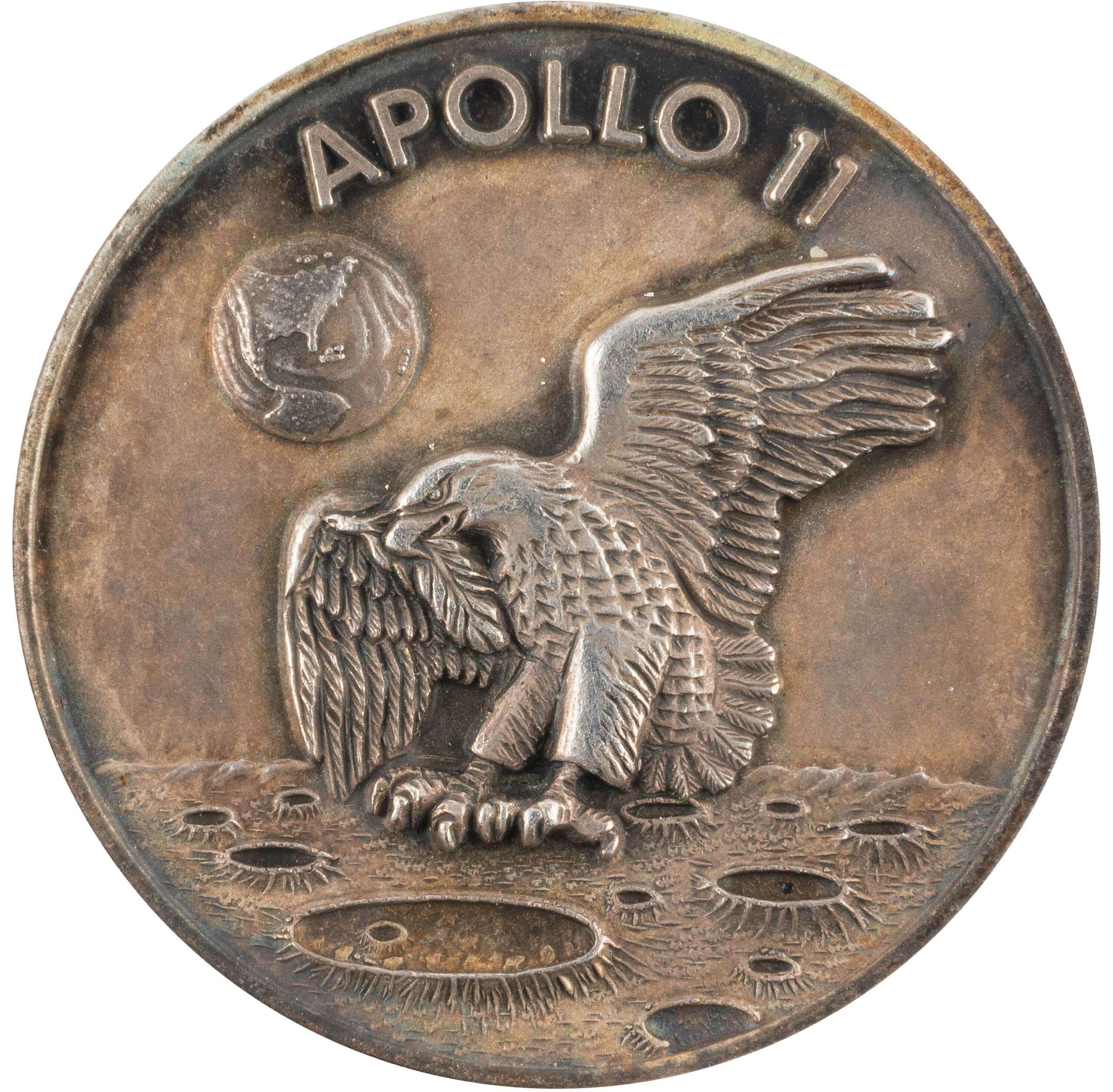
An Apollo 11-flown silver Robbins medallion, originally from the personal collection of lunar module backup pilot Fred Haise, went for $17,500.
When Haise flew again with Apollo 13, this time as a mission lunar module pilot, a beta cloth mission insignia went with him. A grouping of this insignia with a NASA “Meatball” patch in a framed display as well as a signed and certified letter of authenticity closed at $17,500. Originally coming from Haise’s personal collection, this display remembers a near tragedy in the history of the American space program.
A showing originally from a different impressive estate is the “Scanning Telescope” page from the Apollo 11-flown flight plan which originally came from the personal collection of Buzz Aldrin, lunar mission module pilot. Earning $12,500, the flight page plan was one of two high-earning paper artifacts. The other was the Apollo 12-flown Space Treaty which sold for $15,000. The Space Treaty is a copy of an agreement that is the basis for international space law. Signed in 1967 by the United States, the United Kingdom and the Soviet Union, now 114 countries are partial to it. This lot came from the estate of moon-walker and lunar mission module pilot Alan Bean and is displayed alongside an unflown Apollo 12 mission patch and an engraved plate in a framed display.
The third-highest achieving lot was also from Bean’s family collection, an Apollo 12 lunar module-flown Texas flag, which gaveled down for $25,000. Measuring 18 by 12 inches, this is the largest Texas flag ever flown and flew both to the moon in the Yankee Clipper command module and then to the lunar surface in Intrepid. The flag is mounted in a framed display. The silk of the flag was signed by Bean, while the mat was signed by Charles Conrad and Dick Gordon in addition to Bean.
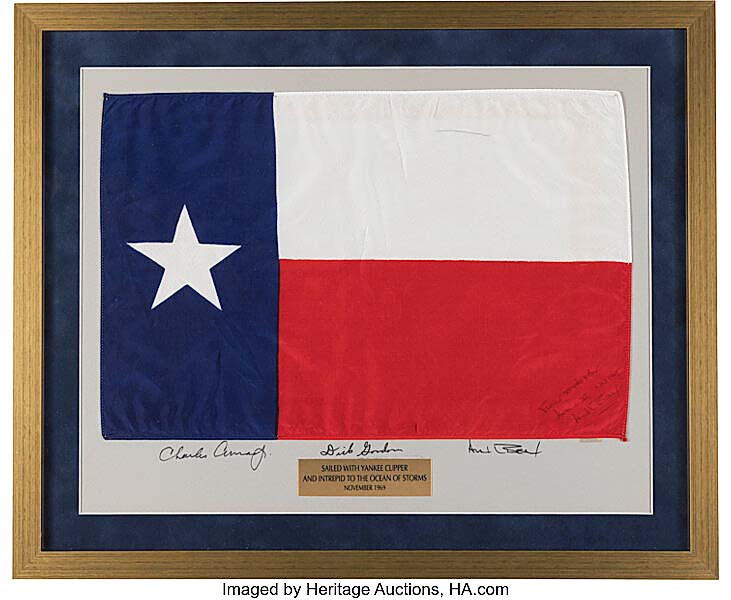
This 18-by-12-inch Texas flag was the largest flown on the Apollo 12 lunar module; signed by Alan Bean from his family collection, it earned $25,000.
A second Apollo 12-flown flag was also offered. This Apollo 1 mission insignia flag flew to the second successful lunar landing with Apollo 12 as a tribute to the men who died in Apollo 1. The men’s names circle a picture of a command/service module orbiting Earth. The flag — measuring 5½ by 4¼ inches — is encased in acrylic and is mounted on a wooden plaque above a card. Originally from the estate of command module pilot Richard Gordon, this is the first of its kind offered by Heritage and brought in $11,265.
The auction also saw some notably rare lots go to sale, including an Apollo 14 lunar module-flown microform King James Bible. This offering contains 24K gold and is embellished with a garnet and pearl. One of 100 microform Bibles flown to the moon’s surface as a tribute to Ed White who died in the Apollo 1 tragedy, this lot is one of only 12 that were flight-certified by astronaut Edgar Mitchell and Reverend John Stout. This is proven by a thorough provenance and a five-digit serial number engraved by Stout, which led to it achieving $22,500 at auction.
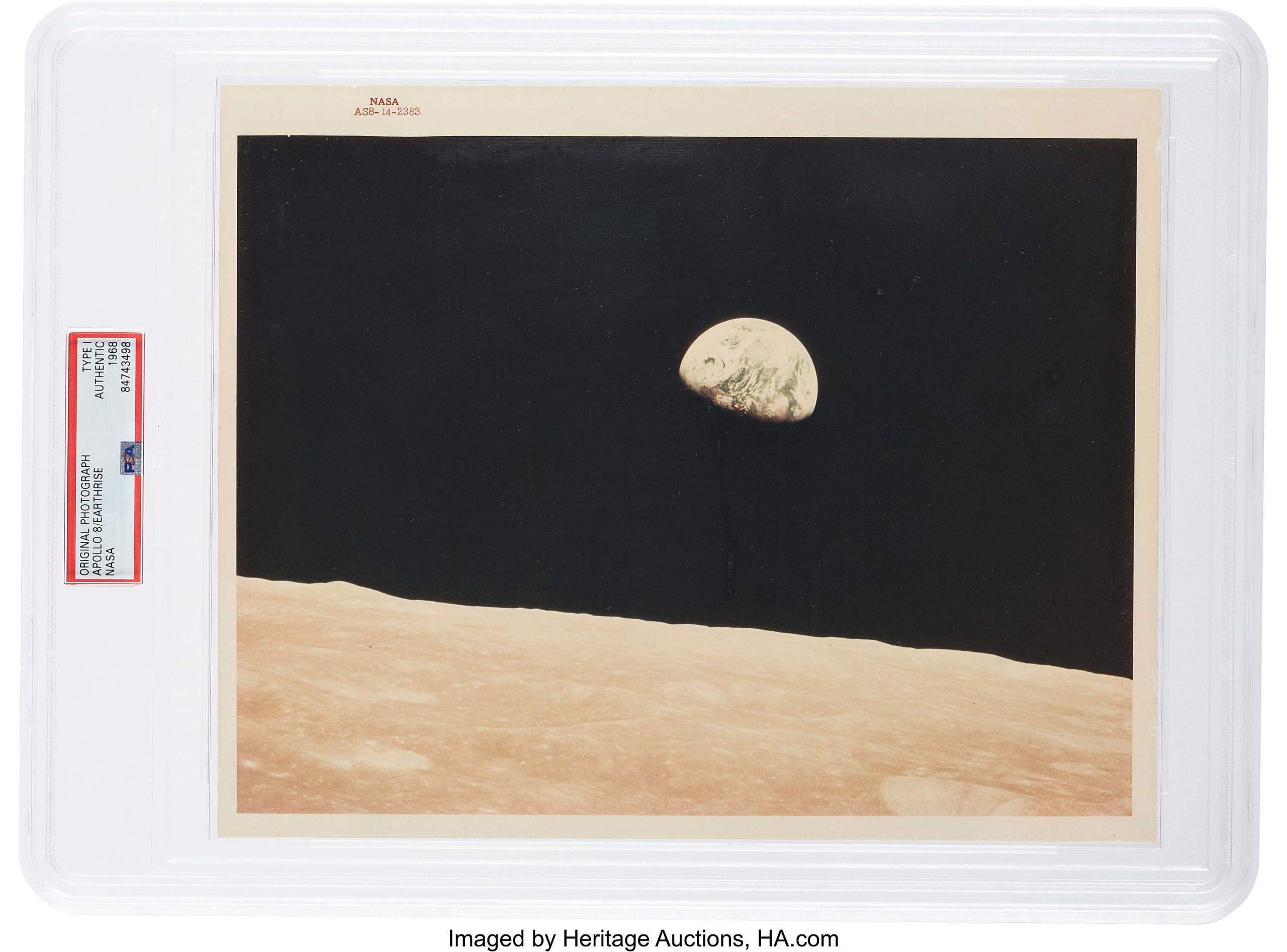
Achieving $11,875 and the highest-selling single photo in the auction was this Apollo 8 “Earthrise” “red number” color photo, Image AS8-14-2383.
Likewise offered was an array of photos. The highest earning of all those sold singularly was an Apollo 8 “Earthrise” photo which realized $11,875. Circa 1968, this vintage “red number” color photo is printed on Kodak paper and has been encapsulated in an acrylic slab.
Other rare offerings included various pieces from crafts themselves. Two triangular lunar module panes that made up one forward-facing window achieved $13,750. Another well-selling mechanical piece was a Skylab III (SL-4)-flown command module rotational controller handle which earned $15,000. Additionally, from the last lunar landing mission was a flown heat shield plug which shows scorching from reentry into the Earth’s atmosphere. This is the first flown heat shield plug that Heritage has offered from the final lunar landing mission, this lot closed at $17,500.
All prices given include the buyer’s premium as stated by the auction house. For more information, www.ha.com or 214-409-1425.

